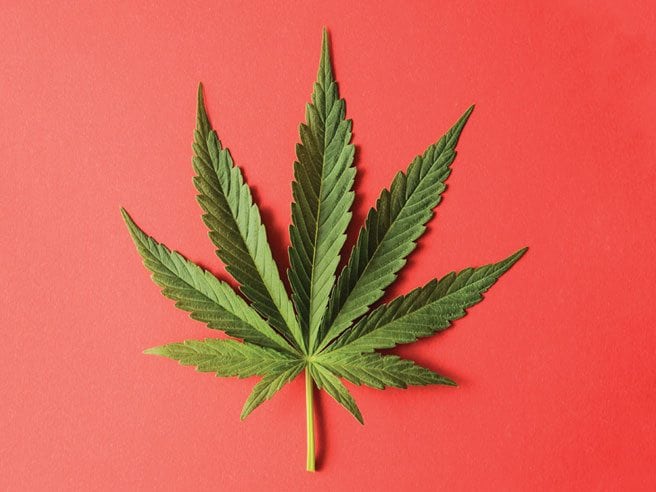Recreational marijuana is now legal in Canada, and some say the future of the product represents a major opportunity for the seed sector.
“If you look in the crystal ball, five to seven years from now, most cannabis will be grown from seed. We’re talking about huge potential on the seed side,” says Ian Davidson, chief agriculture officer for the Richmond, B.C.-based Segra, a tissue culture company specializing in cannabis.
The company is currently developing cannabis micropropagation nurseries to serve large-scale producers in Canada and the United States, specifically California.
According to Davidson, who founded Biologic Systems, a California-based wholesale farm supply company that primarily serves organic medical cannabis producers across the U.S. West Coast, the coming legalization of recreational marijuana in Canada and the legalization of the product in nine American states means the time has arrived for recreational cannabis to be fully understood from a genetic perspective, as has been done with industrial hemp.
The end goal, of course, is the development of cannabis seed that will be used to produce the marijuana of the future. According to Davidson, future cannabis will be consumed in its various extracted parts, something that seed is heavily geared toward.
“There won’t be as much consumer demand to have a flower that is uniform, and that will take the pressure off the cultivator to have a uniform crop,” he says.
“Because of the global political situation, no one has been able to legally do the proper work around cannabis breeding. That’s what’s happening now. We need to really understand this plant and how it functions.”
Background Check

To understand how seed will come to play such a crucial role in the future of cannabis, it helps to understand why plant breeders don’t have a full understanding of marijuana and its genetic makeup.
“There’s no scientifically accepted genome for cannabis,” Davidson says.
Research like that happening at Segra is yielding new insights into the cannabis plant. Segra is developing proprietary methods to perform genetic fingerprint identification on outgoing tissue culture plantlets destined for large-scale cultivation. This will serve as a key quality assurance process for customers.
Cannabis strain identification (known as “strain fingerprinting” and matching) can be accomplished with genotyping technology only.
Segra’s lab, which opened in December 2017, will be able to identify critical genetic markers in young developing plantlets. This allows for the early removal of undesirable plants from breeding programs, thereby saving significant time and resources and, in effect, speeding up the breeding process.
Cannabis strains and products currently available to consumers are questionable in terms of their genetic purity, and the industry is in dire need of a better system for ensuring consumers are getting what they pay for, according to researcher Sean Myles, research chair in the Faculty of Agriculture at Dalhousie University.
“The genetic background of these strains is hugely questionable. Right now, anyone using medicinal or recreational cannabis has no idea what these varieties are genetically,” Myles says. “Right now in the cannabis world, you can put anything on the package and call it whatever you want, and there’s no system in place to ensure you’re actually getting what you pay for in terms of genetic purity of the product.”
In Canada, licensed growers are required to list levels of THC (the psychoactive component in cannabis) and CBD (a non-psychoactive molecule produced by the plant) and test for pesticide residues. Anything else can be put on the package and various claims can be made about it — including medical claims that don’t necessarily have any science behind them.
A good example is a strain called Bubba Kush, sold to licensed medical users and claiming to be what’s called an “indica” strain of marijuana known for its supposed tranquilizing effects.
Leafly.com, a popular cannabis-related website, states that Bubba Kush’s stocky plant stature and bulky bud structure suggest Afghani descent, but its genetic origins aren’t certain. The breeder whom this strain was named after states that Bubba Kush emerged just after 1996 “when a specific cannabis hybrid “pollinated an unknown indica strain obtained in New Orleans.”
Myles notes that such vague descriptions simply don’t cut it in a world where marijuana is fast becoming a legitimate crop just as industrial hemp has in recent years.
“Anyone behind the counter telling you that this strain of marijuana is going to be good for your arthritis, you really have to question that,” Myles says. “At the moment, you can only go by the experience of the person telling you that, or their recollection of what other people told them about it. You can’t rely on scientific evidence, because right now there is none.”
Decoding a Plant

Research like that happening at Segra is yielding new insights into the cannabis plant. Historically, cannabis breeders and consumers believed the plant was divided into two main strains with distinct psychoactive properties — Cannabis sativa is thought to have a stimulating effect, while Cannabis indica is often believed to have a relaxing effect on the user. Or so conventional wisdom says.
Research is showing that strains often marketed as being composed mainly of indica end up being made up mostly of sativa, and vice-versa.
“Right now there’s no scientific basis for the idea that indica strains are more relaxing than sativa strains. What people claim is indica or sativa is often all messed up genetically,” Myles says.
“In nature, there may very well be two distinct strains of marijuana, and they might very well have different effects physically and psychologically, but what is reported by and to the consumer is not an accurate reflection of the genetics of what is being consumed. It’s difficult to verify — people are making claims and lumping them into categories that make no scientific sense.”
According to Davidson, until now the vast majority of breeding work has been done by so-called underground growers, who in recent years have developed strains designed to be higher in THC and CBD levels and grow under different conditions.
One of those “underground growers” is Newfoundland’s Peter Kerrivan (Germination has chosen to use a pseudonym in order to protect his privacy), a licensed medical user of cannabis who for years has grown marijuana for his own personal use, a task he says has been fairly simple using seed currently available on the market.
He prefers small, hardier plants which are Cannabis indica and/or Cannabis sativa, crossed with Cannabis ruderalis. He harvests his owns seeds, then selects the best plants for next season.
“Seed viability is good for two years at room temperature. It’s best kept cold and dry, of course,” he says. Kerrivan, who has a business degree, says that while grow-it-yourself technologies are improving, he’d like to see more work done in terms of new varieties designed for the home market.
As of Oct. 17, 2018, federal legislation allows adults in Canada to cultivate up to four plants in their own residence, although Manitoba and Quebec have decided to ban home cultivation.
Business Opportunities

Cannabis seed has for years been available for licensed medical users in Canada. Now that legalization has arrived, outlets like Newfoundland’s The Seed Company by E.W. Gaze hope to be able to sell seed varieties developed for home use. The cannabis sector represents a business opportunity for companies both large and small, says the store’s assistant manager, Jackson McLean.
The store was founded in 1925 by Ernest Walter Gaze and was the first of its kind in Newfoundland. Specializing in vegetable and flower seeds, the store quickly became the go-to spot on the island for gardeners and farmers alike. It recently signed a contract to supply vegetable and flower seed racks at popular grocery store locations in Atlantic Canada this spring.
“Getting a good yield from the flower takes some know-how. Anyone can drop a seed into dirt, but you won’t necessarily get what you want out of it unless you really know what you’re doing,” says the store’s assistant manager, Jackson McLean.
The Seed Company joins a plethora of businesses eager to play a role in the space. Segra believes that the close integration of molecular biology and genotyping capabilities with its new cannabis micropropagation facility in B.C. will be not only a critical differentiator in the expanding cannabis market, but also essential to success.
An important puzzle piece, Myles says, is to put in place the same breeding system for cannabis that is already in place for other crops in Canada.
“It takes time to recruit people who’ve been breeding other crops to come into your industry to give advice on how to do this properly,” he says. “You’ll see the industry adopt technologies used in corn and rice to accelerate the breeding of marijuana. Thousands of very smart scientists work day and night to improve corn and wheat and barley and rice — crops that feed the world — and they’re the same people who are going to be working to improve cannabis.”
In fact, many of the diseases that affect food crops like corn also affect cannabis. Segra’s business development manager, Kevin Mehr, has developed a method to detect fusarium infections in cannabis plants.
The Canadian Seed Growers’ Association is working to partner with the Government of Canada, like it did with hemp, to explore seed certification services for cannabis, notes CSGA executive director Glyn Chancey.
In the meantime, breeders and others will continue to make new discoveries in the cannabis realm and ensure the crop evolves with time.
“It’s exciting for the agricultural community to have something new to sink their teeth into,” Davidson adds.













